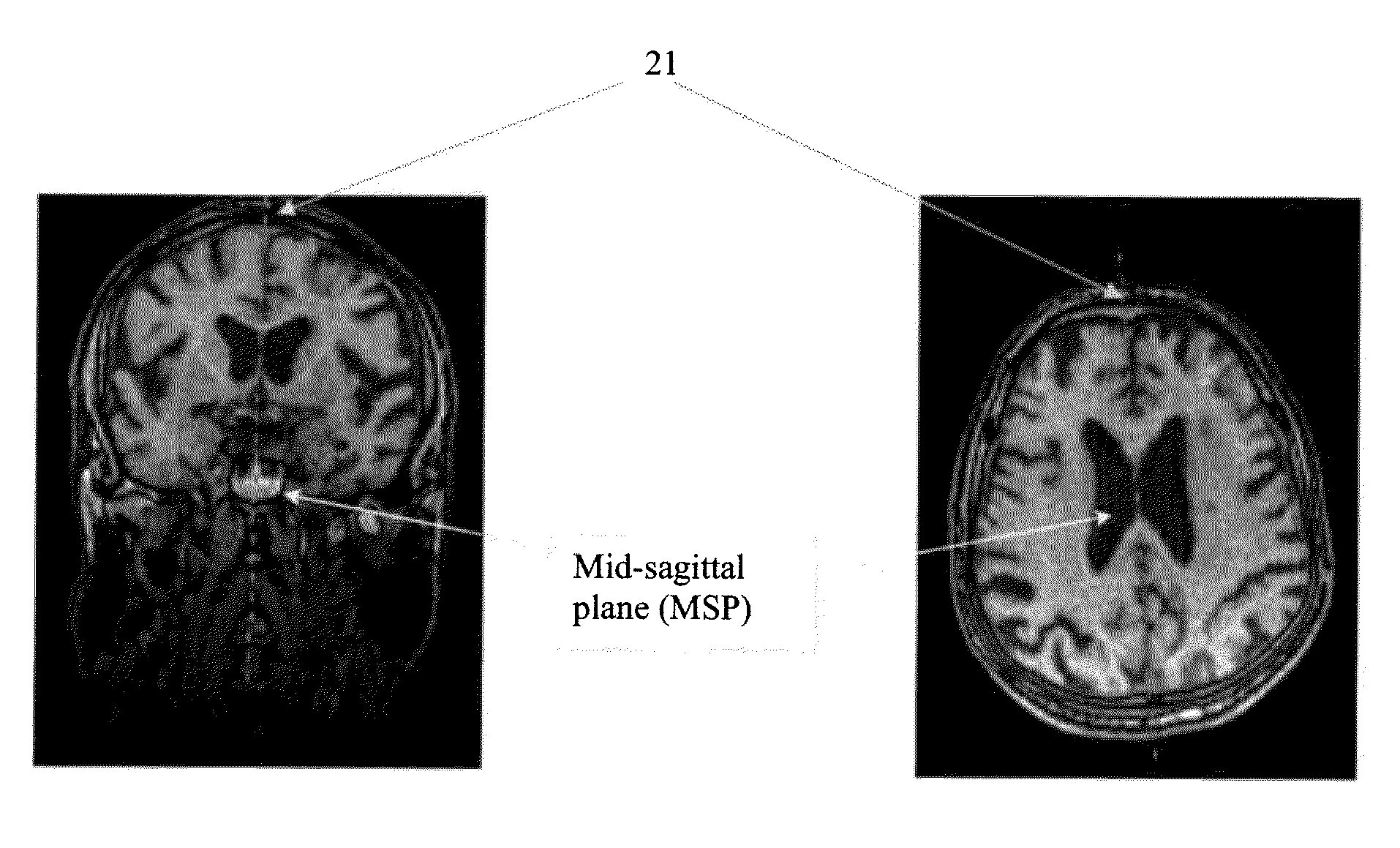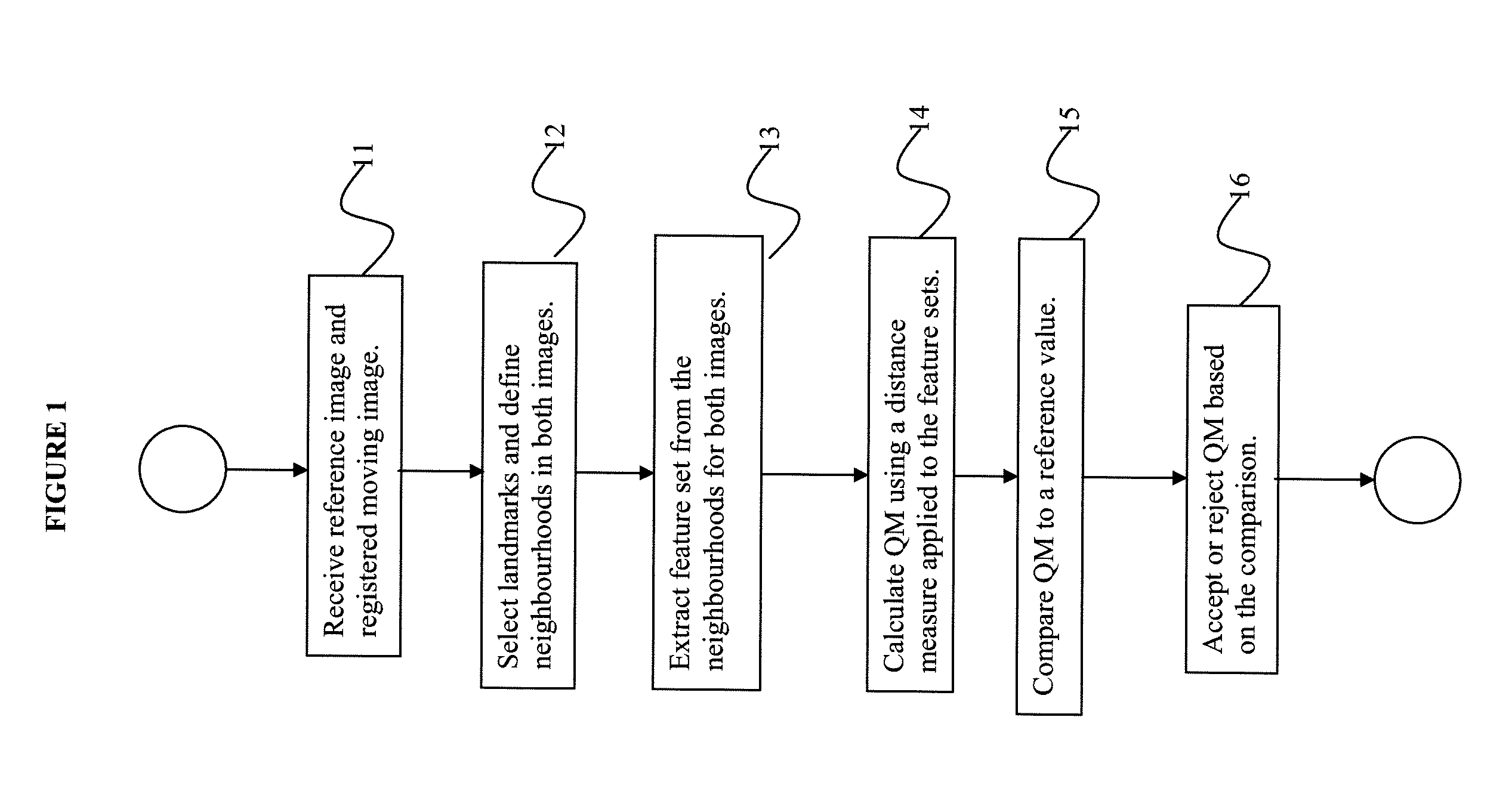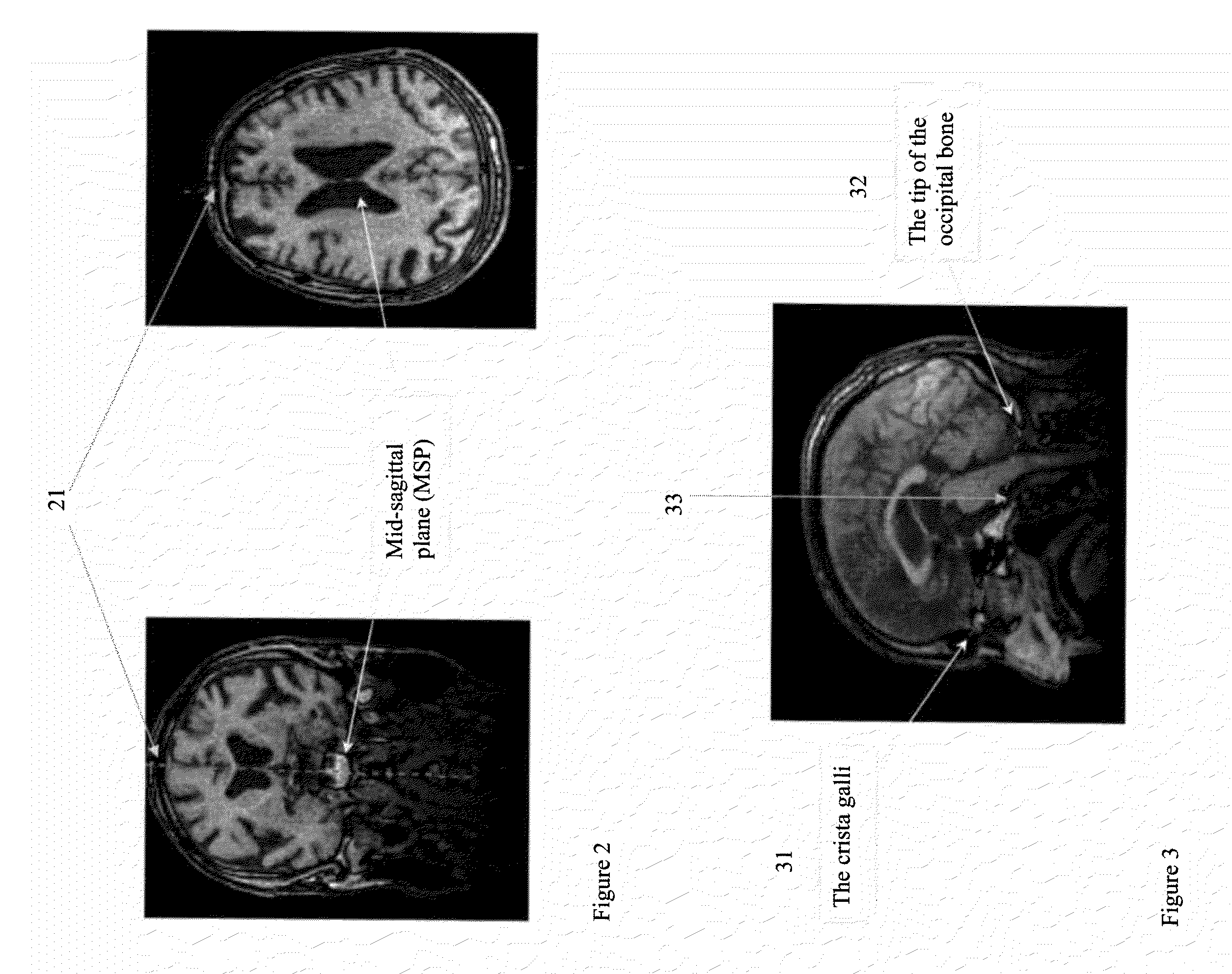System and method for verifying registration accuracy in digital medical images
a technology of digital medical images and registration accuracy, applied in image analysis, image enhancement, instruments, etc., can solve the problem of spatio-temporal uncertainty of image registration
- Summary
- Abstract
- Description
- Claims
- Application Information
AI Technical Summary
Benefits of technology
Problems solved by technology
Method used
Image
Examples
example
[0042]In an example according to an embodiment of the invention, the Mid-Sagittal Plane (MSP), which separates the brain along its two hemispheres, was chosen as an axis of symmetry. The MSP is defined to go through two main landmarks of the brain, the Crista-Gall (CG) and the tip of the occipital bone (TOB). FIG. 2 illustrates a proper detection of the mid-sagittal plane (MSP) 21, and FIG. 3 illustrates a proper detection of the Crista-Galli 31 and the tip of the occipital bone 32 (CG-OB). The dashed line 33 connecting the Crista-Galli 31 and the tip of the occipital bone 32 represents the mid-sagittal plane. A symmetrized dataset was selected as the reference volume into which to map the MSP, using a set of points that matches specific landmarks within the MSP.
[0043]Now that the landmark or set of landmarks has been established, one can define a measure to use to verify the quality of the registration. According to an embodiment of the invention, one seeks to verify that the shape...
PUM
 Login to View More
Login to View More Abstract
Description
Claims
Application Information
 Login to View More
Login to View More - R&D
- Intellectual Property
- Life Sciences
- Materials
- Tech Scout
- Unparalleled Data Quality
- Higher Quality Content
- 60% Fewer Hallucinations
Browse by: Latest US Patents, China's latest patents, Technical Efficacy Thesaurus, Application Domain, Technology Topic, Popular Technical Reports.
© 2025 PatSnap. All rights reserved.Legal|Privacy policy|Modern Slavery Act Transparency Statement|Sitemap|About US| Contact US: help@patsnap.com



